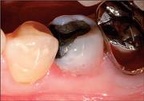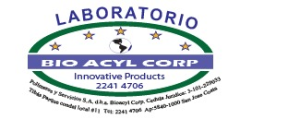Apical external reabsorptions
The paradigm of applying an appropriate load to the periodontium to obtain maximum dental movement with minimal bone resorption, cement resorption and ligament remodeling, can give an unexpected result depending on the patient's genetic factors, history of asthma, allergies, trauma and from previous dental procedures, when the resolution of inflammation (>48hrs) induced by the mechanical force of the tooth moving within the socket, takes a maladaptive turn. There are cases in which the odontoclasts extend their action on the cement to the dentin, which overwhelms the spontaneous reparative action of the cement and leads to irreversible bone resorption (Lunardi, Bécavin, Gambiez, & others, 2013).
Internal apical resorptions are usually controlled without problem during orthodontic treatment. They appear early, generally without infectious complications, and can be detected by the orthodontist and treated accordingly. They are cervical resorptions, which appear after the treatment has finished —between 18 and 33 months— and due to its proximity to the sulcus . they are exposed to bacterial contamination and to being very invasive, to which this message refers. The inflammatory exacerbation caused by the infection facilitates the conversion of TRAP-positive monocytes (tartarate-resistant acid phosphatase) into odontoclasts and their aggressiveness (Kamat, Puranik, Vanaki, & others, 2013). According to Heithersay, 21.2% to 24.1% of patients with cervical resorptions are caused by orthodontic procedures and the treatment for this complication is not as clear as it is for apical ones; temporary suspension of orthodontic treatment.

Cervical pink discoloration denoting the presence of an underlying external resorption in the lower left second premolar. Taken from Lunardi.
The presence of a tissue response to stress during dental movements of orthodontic processes has been widely documented in the literature and also in the study that we present to you carried out in Costa Rica, where the difference between patients who receive orthodontic treatment and those chosen as controls and placebo, present with adverse signs in terms of bacterial plaque accumulation and periodontal disease, compared to the group treated with Periactil gel. The possibility of favorably reducing these factors and inflammation in orthodontic patients without affecting dental mobility places the Complete Oral Care System kitas a novel last generation weapon which can improve the immediate evolution of orthodontic patients and avoid mediate complications in the medium term. It is also notable that the study placebo, which contains the glycobiology of the special edible vehicle of the 2 kit formulations, caused a favorable effect on the results; although much less than that of the complete formulation of Periactil. This is explained by the complex glycobiology and the mucin-like factors of the formulation vehicle, which can grant protection and immunity by exclusion in the mucosa and despite the absence of placebo, of the proprietary buffer that controls the microenvironment in the samples. pH parameters, redox control and bioenergetic signaling of the complete formulation.
As for the trajectory of Complete. It is a product that has been marketed in the US for more than 5 years, for general oral care, with excellent results and a percentage of repeat purchases that is close to 60%. The users themselves, in their testimonials, have noted the effects that were already evident in the 2003 study and in some cases, they have expressed it with unexpectedly more favorable testimonials than anticipated. For reasons of being a development of an SME and the lack of resources to bring the technology to the market, until now Complete has entered the Costa Rican market, without being welcomed and supported by the different physical sales channels. At the moment it is only available by direct purchase. The kit consists of:
• a brushing element that can be considered a brush rinse, so it can be used after brushing with regular non-peroxide toothpaste, and
• a second element, which is applied by spreading it in the oral cavity and the ingested remainder (100% edible) to provide protection between meals.
The product today has evolved considerably and is much more refined and effective than the initial one, which was used in the study for which we provide a link below:
El impacto de Periactil para el manejo de la inflamación durante el tratamiento de ortodoncia.
Referencias
Heithersay, G. S. (1999). Invasive cervical resorption: an analysis of potential predisposing factors. Quintessence International (Berlin, Germany : 1985), 30(2), 83—95.
Kamat, M., Puranik, R., Vanaki, S., & others. (2013). An insight into the regulatory mechanisms of cells involved in resorption of dental hard tissues. Journal of Oral and Maxillofacial Pathology : JOMFP, 17(2), 228.
Lunardi, D., Bécavin, T., Gambiez, A., & others. (2013). Orthodontically induced inflammatory root resorption: apical and cervical complications. Journal of Dentofacial Anomalies and Orthodontics, 16(1), 102.






